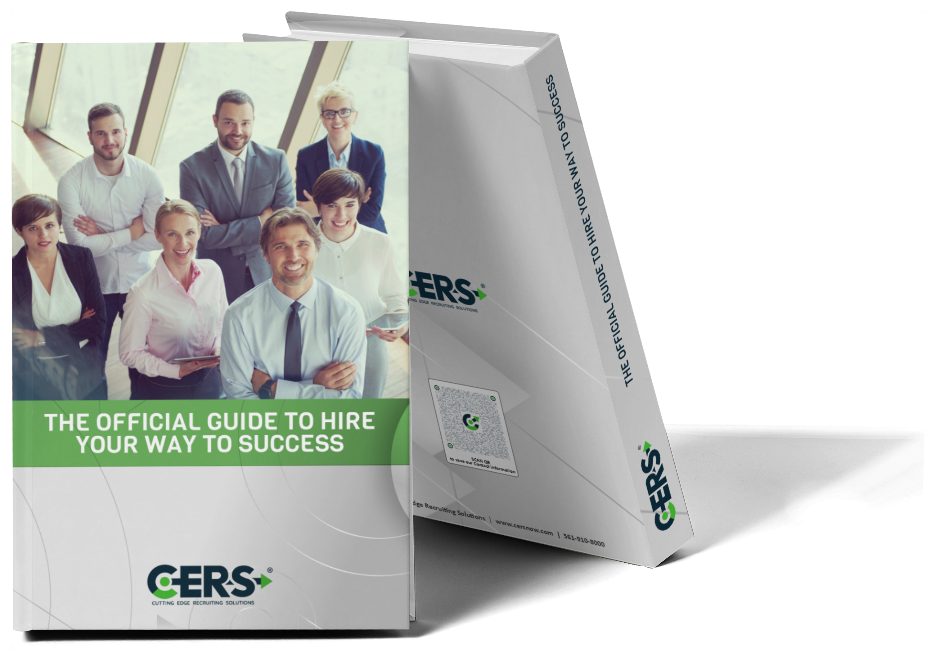For many companies, vacant positions are so common that they begin to feel like the norm; it just feels like part of everyday culture. It’s not hard to see how this situation might come about: staff work in a high vacancy environment for so long – and without any apparent consequences – that there is a kind of understood acceptance of it. It quietly and surreptitiously becomes ‘simply the way things are.’
As a result, the performance benchmark is permanently lowered; managers accept the status quo and eventually stop trying to correct the situation. But perpetually vacant positions should never be accepted as the norm, as even though it might not seem like it on the surface, it is damaging your business in six ways, which we have described below.
1. Burning out existing staff
Staff in the US are already overworked: research from Gallup shows that a typical American worker puts in a 47 hour a week, with 4 in 10 Americans working over 50 hours a week, and 2 in 10 working over 60 hours a week.
If your business has allowed a climate of numerous vacant positions to become the norm, you could be shifting this additional burden of work onto these already overworked staff, which could lead to a situation of staff burnout. So what does burnout mean for your business? Overworked staff tend to have higher levels of staff sickness and lower levels of productivity, according to this Stanford University study showing that productivity drops dramatically after 50 hours working in a week.
Burnout and overworking is a dangerous negative feedback loop, in that the more that staff burnout, the less productive they’ll be, the more pressure will be applied to them and the more they’ll burnout.
2. Damages morale
It won’t just be that staff can’t work to their optimum, but a culture of numerous vacant positions will eventually start to erode morale. How? Most staff are happy to go the extra mile from time to time – to help get orders out the door – but they don’t expect to be going the extra mile, day in day out, all year round, as is the case in a perpetually under-resourced firm. That’s not part of the program.
In an environment of numerous vacancies, remaining staff who pick up the slack are likely to feel taken advantage of, which can lead to resentment and low morale. This will lead to ‘slow-burner syndrome’ which is when rather than being suddenly shocked into leaving by one bad event, staff leave after a long period of accumulated dissatisfaction with constant over-working. Research shows that this slow-burner syndrome is one of the most common reasons for staff turnover.
People tend to throw around the phrase, “people don’t leave bad companies, they leave bad bosses,” a lot when it comes to turnover, but in this case, if the managers are just as overworked as the staff, perhaps it is the organization – and its culture – that’s to blame.
3. Leads to loss of customer confidence
If you have vacant positions in your business, the likelihood is not only that you’ll be understaffed, but also under-skilled, which means that customer confidence could be undermined in two ways. Firstly, there is a greater chance that orders will be late, and secondly,
there is a greater chance of mistakes being made due to staff rushing and/or being tired.
Therefore, due to frustrated staff arising from your high vacancy rate, your customers may experience below average customer service, potential knowledge gaps, and a perceived lack of expertise. These combined failings may damage customer confidence, increasing the chance of complaints and reducing the chance of them renewing their contract with you, and making it much harder for you to increase prices or sell on additional services.
4. Reduces sales and business referrals
Even in the world of search engines and social media marketing, it seems that word-of-mouth is still the most effective way to get new business, with 85% of firms finding new business via word-of-mouth. Let’s face it: is a client of yours really going to refer their associates to you if you have been failing to fulfill orders and provide customer satisfaction to them due to almost perpetual staffing issues?
Being understaffed due to a climate of high numbers of vacancies will mean your business is seen as a risk by existing customers and they will be less likely to refer you, risking a loss of access to important new leads. Even worse? Your customers become frustrated enough to stop being customers entirely.
5. Increase in bad hires due to rushing to fill empty desks.
One of the first things often to be sacrificed in a climate of high vacancies is quality of hire. Time-pressurized hiring managers aren’t able to dedicate adequate time to the hiring process as they are temporarily back-filling for vacant positions. As a result, corners can be cut in order to rush new staff into post.
As the assessment and selection process is neglected, more and more bad hires are allowed into the business, further compounding your resourcing problems. It’s a vicious cycle. According to research from Career Builder, rushing the selection and decision making process is the most common reason that bad hires are made.
6. Your head count budget may be withdrawn altogether
If your department has held open vacancies for too long – without catastrophic consequences – senior decision makers may decide for you that your department can survive without the budget and withdraw the budget and give it to another department. This is a very common occurrence as organization looks to streamline their business processes.
Fixing the problem
We have talked a lot about how a climate of open positions and empty desks can be very damaging for your business, so much so in fact that you are no doubt wondering how to solve the problem. The good news is that there are plenty of fixes to this problem, and we’ve outlined a few simple ones below.
Planning
It can be hard to find time for planning when you are in the midst of an exciting project, but the reality is that a lot of recruitment needs can be predicted a long way in advance. And so rather than be surprised by sudden hiring needs and unable to respond sufficiently as a result, foresight and planning allows you to lay the groundwork so your firm can respond quickly to resourcing needs, reducing the time to hire.
For starters, if you are in HR or corporate recruiting, why not talk to heads of department perhaps once a quarter to find out their growth schedule and additional headcount requirements for the upcoming period? This means you’ll be able to do advanced planning and be ready to move fast when needed, reducing your time-to-hire without compromising quality.
If you are a department manager, prepare an annual additional head-count plan by month and hand this to your HR team or external recruiting teams. This way they’ll be recruitment-ready and able to respond much faster to your needs. This kind of advanced headcount planning will reduce time-to-hire and minimize the number of empty desks in your business.
Identify flight-risks using stay interviews.
What is a ‘flight risk’? It has nothing to do with aviation! Flight risks are those disengaged employees who are likely to leave soon. If you can identify flight risks in advance, you can put in a retention plan, lower your turnover, and reduce your number of vacancies. The best method to accomplish this is to conduct stay interviews (though it’s still a good idea to prepare other viable alternatives to deter flight risks as well).

A ‘stay interview’ is a modern staff retention tool promoted by the Society for Human Resource Management and is currently used by market leaders like IBM and Procter & Gamble. Stay interviews are like an early warning system which enable you to find out if an employee is on the verge of leaving, giving you the opportunity to swiftly take action, lowering your turnover rate, and reducing the number of open positions in your organization at any one time.
During a stay interview, you can find out each employee’s flight-risk status by asking questions that uncover the following information:
- Which factors are currently keeping the employee at the company
- What positive actions could increase the employee’s loyalty
- Triggers that may encourage the employee to quit
So how often should you use stay interviews? Ideally, they would be implemented once, perhaps twice a year. January is a good time to do stay interviews, as research shows that jobs search activity peaks just after Christmas which suggests that employees are restless and at risk of leaving. The post-holiday period in September is also a peak time for job activity as people return from holidays, making this another great time to conduct stay interviews to help counteract employee restlessness.
Used well, stay interviews can lower employee turnover rates and reduce the open position rate in your business too. When combined with a surprise positive performance review, employees will likely feel more appreciated and that any concerns are being acknowledged.
Speed up hiring.
Of course, another way to decrease your open position rate is to reduce the time to hire, which in turn will reduce the number of empty desks. It’s not always easy to do this without compromising quality, but the following selective tactics will enable you to speed up hiring without reducing quality.
Promote from within: Not only are internal recruits generally hired more quickly than external recruits, research from Wharton University shows that internal recruits perform better during their first two years in post and have higher retention rates than externally appointed recruits to similar posts. If you can put more emphasis on internal recruitment you will ultimately speed up recruitment, increase retention rates, and reduce your numbers of empty desks.
Have more flexible interview schedules: Scheduling conflicts can lead to lengthy delays in the interview process. Many candidates are working and often time-pressurized and can’t always fit into rigid interview schedules. Yet, if you were to offer flexible interview options such as video interviewing or interviewing off site or during off hours, you should be able to reduce scheduling conflicts and speed up hiring without compromising quality. This strategy also shows the candidate more of a compassionate process than they might normally be used to during interviewing, so it’s a great way for them to immediately consider taking your offer seriously.
Be open to hiring unemployed candidates: Research from the Pew Charitable Trust shows that employers are reluctant to hire the unemployed as they tend to prefer currently employed candidates. But employers should be open to hiring unemployed candidates, as there is no evidence to suggest that currently employed applicants will perform better than or be more committed than currently unemployed applicants.
In fact, unemployed applicants hold an important advantage over the employed applicant in that they are immediately available, whereas an employed applicant might have a notice period spanning two weeks to 3 months. Being prepared to hire unemployed applicants will speed up your hiring process without harming quality.
Vacant positions can have a substantial impact on your business. In fact, most companies don’t realize the serious effects and how they impact your bottom line – and even threaten your position in the market. Unfilled positions translate to universally higher costs for your organization and make it difficult to maintain and grow your competitive advantage. With too many vacant positions, or a shortage of talented candidates, achieving success is nearly impossible.
CERS understands the challenges and pitfalls businesses regularly deal with during the hiring process. We are able to partner with your company to optimize how you retain and hire top talent across all departments. Our solutions and consulting services are designed to provide an immediate return on investment in either productivity or profitability – but often both.
[av_heading heading=’You may also be interested in:’ tag=’h3′ style=” size=” subheading_active=” subheading_size=’15’ padding=’10’ color=” custom_font=”][/av_heading]
[av_blog blog_type=’posts’ categories=’10’ link=’category’ blog_style=’blog-grid’ columns=’3′ contents=’title_read_more’ content_length=’content’ preview_mode=’auto’ image_size=’portfolio’ items=’3′ offset=’0′ paginate=’yes’ conditional=”]











